Reality tourism, readymade art, and Thirtieth St. unofficial pop-up auto museum
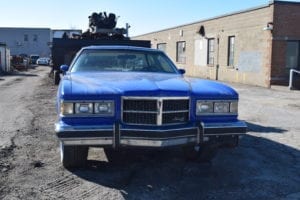
Detail from Thirtieth St. unofficial pop-up auto museum. Jaan Pill photo. Click on the photos to enlarge them; click again to enlarge them further.
A previous post is concerned with an unofficial pop-up auto museum in Alderwood, the neighbourhood directly north of Long Branch (Toronto).
With regard to the post, a number of related themes come to mind including:
- reality tourism;
- the art of the readymade;
- naive and outsider art;
- conceptual art;
- repositioning of museums and art galleries;
- the museum of the disappearing landscape; and
- repositioning of disappearing coastlines.
Reality tourism
A previous post, entitled Displacing Desire (2006) and The Ethics of Sightseeing (2011), opens with the following text:
Reality tourism does not need to be restricted to visits by affluent tourists to impoverished slums. Why should slums have a monopoly over reality?
Any place you visit, including a room in your house, entails reality tourism.
My form of reality tourism includes walks in Lakeview and Long Branch (Toronto not New Jersey).
Occasionally I travel further afield and visit New Toronto and Mimico.
At times I travel outside of Canada.
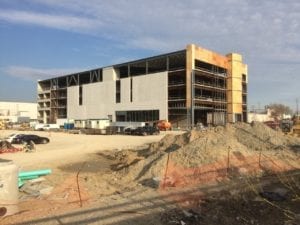
Future site of Marino’s Automotive Group north of The Queensway and Kipling Ave. in Etobicoke. The site features a starkly industrial visual quality, similar to a visually impressive industrial site featured at a previous post about a Leaside photography exhibit. Jaan Pill photo
[End]
The art of the readymade
The unofficial pop-up auto museum, that I refer to at a previous post, entails a particular role for the curator, or curators. A basic point is that, in this case, the curator touches nothing, except her or his camera. The curator brings forth nothing, and arranges nothing into place, so far as the handling of artifacts or art objects is concerned.
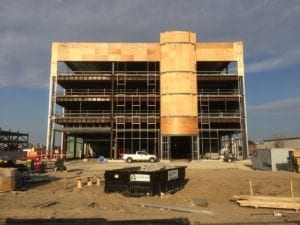
Future site of Marino’s Automotive Group north of The Queensway and Kipling Ave. in Etobicoke. Jaan Pill photo
Instead, the curator focuses attention on particular objects in a readymade environment. The bringing of attention, in this case to a particular car, and the documentation of that focusing of attention, is in this case achieved by means of photographs and accompanying captions and commentary.
The reference to the readymade goes back to art history, as positioned in what is called the “Western world,” with a particular reference to the work of Marcel Duchamp.
Naive and outsider art
A key narrative, in the history of Western museums, concerns the role in history that museums, and academic disciplines such anthropology, have played in positioning indigenous cultures within the framework of colonialism.
Naive and outsider art, in the hands of curators, seeks to serve as a countervailing force, among other means of reconceptualizing world history, with regard to such narratives.
However, it remains as an underlying reality that the latter art forms remain marginalized, and in service of the power structures inside of which Western museums are positioned.
Conceptual art and related topics
Conceptual art, to the extent that I understand art history, involves the monetization of art that is seen to exist largely within the framework, according to which the distinction between art and non-art is made.
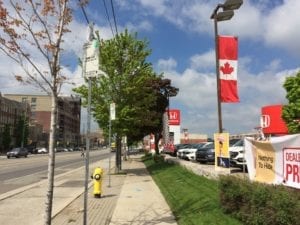
Aug. 7, 2017 view of Marino’s Auto Group at its current location north of Lake Shore Blvd. West and Thirty Third. St. Jaan Pill photo
Again, conceptual art exists in service of the power structures inside of which Western museums and art galleries are positioned. The monetization process is the key variable, in ascription of meaning to this form of art.
The arguments against monetization are not particularly inspiring, in my view, as I will explain in future posts, with a particular focus on narratives related to the meaning inherent in the disappearance of coastlines in the era of climate change.
My plan, for future posts, is to address the repositioning of museums and art galleries; the museum of the disappearing landscape; and the repositioning of disappearing coastlines.
Future site of Marino’s Automotive Group
The future site of Marino’s Automotive Group entails a repositioning of the Marino’s retail outlet currently located north of Lake Shore Blvd. West and Thirty Third St. The site is featured at a previous post:
In a few words: May 5, 2018 “Evolution of Long Branch Park” Jane’s Walk, led by MPP Peter Milczyn
The latter post includes a YouTube video in which Etobicoke-Lakeshore MPP Peter Milczyn describes the redevelopment history, including the history of Marino’s Auto Group, north of Lake Shore Blvd. West.



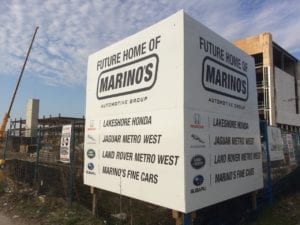
Leave a Reply
Want to join the discussion?Feel free to contribute!